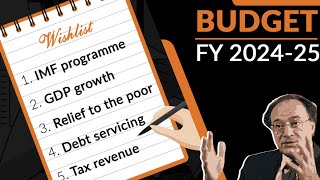Lack of appropriate system to change the traditional badla to margin financing dried up the volumes, forcing the market to trade in a narrow band, resulting in serious drain market liquidity. According to a report presented to Shaukat Tarin-led Committee on "Stock Market Liquidity", the stock market is driven by liquidity flows.
In case of Pakistan too, this is equally true. When the implementation of changeover from the traditional badla to margin financing began, a lack of appropriate preparation resulted in liquidity crunch. This is a serious situation and needs to be addressed urgently.
Since March 2005, after the blowout and reduction of badla (COT), the normal leverage available to the market has fallen sharply. Since the end of June 2005, the estimated leverage has been reduced to 20 percent of free-float capitalisation versus the average leverage of around 30 percent in the previous 12 months. "This is the single most critical reason that the stock market has become range bound despite solid fundamentals and very healthy (20 percent plus) corporate earnings growth prospects for FY06," the report said.
The report explained that the current situation is not only creating investors lack of confidence problem, but carries the real danger of derailing/rolling back of the Government of Pakistan stated policy of increasing the retail investor base in Pakistan and providing the benefits of privatisation to the common investors. It is the retail investor that needs liquidity to enter and exit the market readily.
Furthermore, an inefficient market, which does not attract new investors also severely hampers the GOP''s plans for further privatisation and offloading of public sector entities shares via the stock market.
The market was already under-leveraged to below normal levels due to badla reduction and lack of growth in margin/alternative financing mechanism. This is creating a liquidity shortage currently of an estimated Rs 30 billion.
The current free-float (as of July 19, 2005) is Rs 328 billion. The normal leverage over the last 12 months (June 2004-June 2005) was 30 percent. The liquidity requirement to attain the normal trend leverage of 30 percent is Rs 98 billion. The current liquidity is Rs 67 billion, which translates into 20 percent of the free-float of Rs 328 billion, as a result there is a shortfall of Rs 30 billion at present.
"In order to improve the market''s free-float and create depth as well as continue reducing government''s stake and role in business and industry, the government is planning further share offering over the coming 12-24 months. These are likely to include the companies, which were already listed, such as OGDC, PPL, UBL, Kapco, PTCL, KESC to name a few.
In addition, there are expectations that Pakistan Steel, State Life Insurance Company and Habib Bank would get listed by the government over the next 12 to 36 months. The addition of these companies would raise the market capitalisation by an estimated Rs 222 billion. At the historic 30 percent average leverage, the implied additional liquidity need would be Rs 67 billion.
Going forward, there would be a potential liquidity need of anywhere between Rs 50 billion at the very minimum and up to Rs 120 billion over the medium-term. The adverse impact on the market of a liquidity shortage in such a situation can only be imagined.
BR100
7,583
Increased By
39.5 (0.52%)
BR30
24,238
Increased By
202.6 (0.84%)
KSE100
72,797
Increased By
207.9 (0.29%)
KSE30
23,213
Increased By
76.4 (0.33%)






















Comments
Comments are closed.